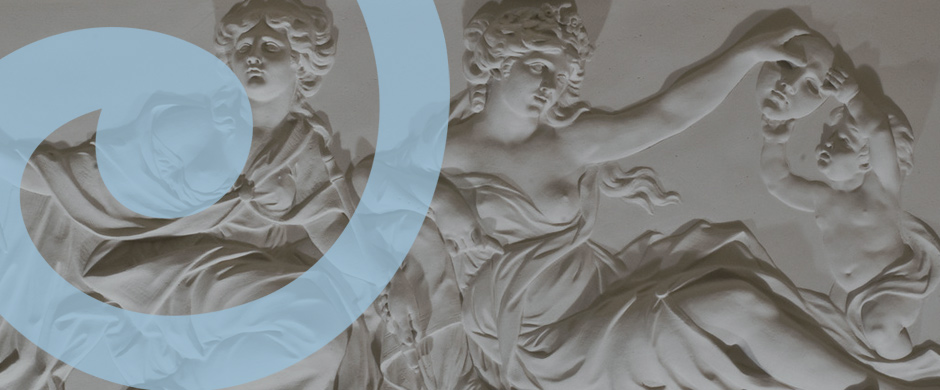 | IN DISCUSSION
| IN DISCUSSION

The Great Hall Exhibition Essays
Students from Professor Edward Sullivan's course Curatorial Practice - Curatorial Study: A Crossdisciplinary Approach reviewed Graphic Objects: Elaine Lustig Cohen's Sculptural Works.
By Matthias Jullion
November 1, 2018
The graphic designer and artist Elaine Lustig Cohen, more known for her paintings and book covers, has also created wonderful sculptures who are now on display at the Institute of Fine Arts. Indeed, the IFA is welcoming again this fall a new exhibition about contemporary art. Graphic Objects: Elaine Lustig Cohen’s Sculptural Works has opened October 19, 2018 and is curated by IFA students Francesca Ferrari, Kolleen Ku, Emily Shoyer and Chao Chi Chiu. The centerpieces of this exhibition are two box-like sculptures made by Elaine Lustig Cohen in1981. This exhibition, created in conjunction with Masterpieces and Curiosities: Elaine Lustig Cohen at the Jewish Museum, focuses more on the sculptural aspect of the work of the artist. The exhibition counts also three panels, located behind the sculptures and hanging other reliefs of the artists.
I would like now to focus on one of these artworks to discuss the qualities inherent in Lusting Cohen’s work. Color Box (1981) is not a proper parallelepiped. The upper left is indeed absent. Elaine Lustig Cohen plays here with the form and the idea of continuity and discontinuity. This aspect gives to the artwork its character and its singularity. The artist also used colors to create different patterns. This work may be inspired by that of Piet Mondrian, such as Composition II in Red, Blue, and Yellow (1929). In a way, the visitor is facing a three-dimensional Mondrian. Indeed, we can see in the work of Lustig Cohen the use of the black lines to enclose some colors. She has also decided in some cases to leave the enclosure open as at the upper portion of the artwork. Besides, by playing with the colors the artist played with the geometry of the object, creating a simple artwork in its form, but complex in its function and meaning. The association of colors creates a work aesthetically pleasing. And the colorful panels behind it helps to enhance the beauty and features of such artwork.
Continue reading student essays


